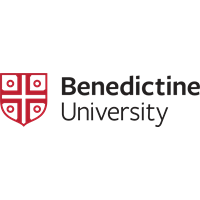Below is a summary of the abstract you submitted. Presenting author(s) is shown in bold.
If any changes need to be made, you can modify the abstract or change the authors.
You can also download a .docx version of this abstract.
If there are any problems, please email Dan at dar78@pitt.edu and he'll take care of them!
This abstract was last modified on March 18, 2024 at 2:14 p.m..

Viruses are infectious particles that affect a variety of hosts including humans, animals, plants, and microorganisms such as archaea and bacteria. We are interested in phages, which specifically target bacterial hosts via two infection mechanisms known as lytic and lysogenic cycles. In this work, we studied phages that infect the genus Arthrobacter sp. Our goal was to identify soil samples that provide phages for a variety of Arthrobacter species including A. globiformis, A. atrocyaneus, and A. sulfureus when used in a research course. This would help reduce the number of isolation rounds needed to find a phage. We hypothesized that sites with seasonal soil and plant type turnover would yield the most variety of phages. Out of four sites, we were able to detect phages for A. globiformis and A. atrocyaneus after only one round of Direct isolation. Here, we focus on the characterization of three A. atrocyaneus phages named Slak, Starboy, and Olbo. The phages have small plaque diameters (0.5 – 1.0 mm) with 2 showing clear centers and one (Starboy) a cloudy center. All phages were able to infect between 22 – 37°C although the PFU/mL decreased significantly at the highest temperature (37°C). Samples were prepared for transmission electron microscopy (TEM) and DNA analysis. Most resemble Siphoviruses with isometric capsids and flexible tails. Using SEA-PHAGES references and previous laboratory phage DNA results, we selected 6-7 restriction enzyme sites to perform genome analysis with a low success rate. We would like to study the phages’ host range capabilities and perform genome sequencing to learn more about their infection cycles. We would also like to continue our study by expanding the number of sites to determine which soils are best to isolate A. sulfureus phages near Benedictine University.
Acknowledgement: Dr. Tagide deCarvalho, University of Maryland, Baltimore County (UMBC) for TEM images. Benedictine University undergraduate research. SEA-PHAGES; (Science Education Alliance-Phage Hunters Advancing Genomics and Evolutionary Science)
